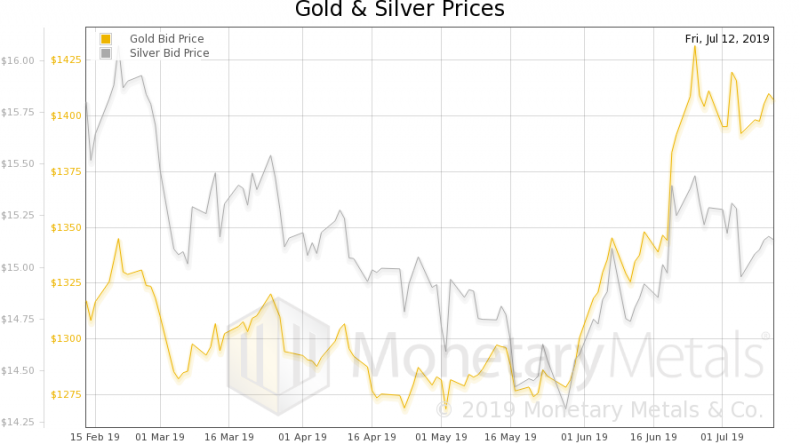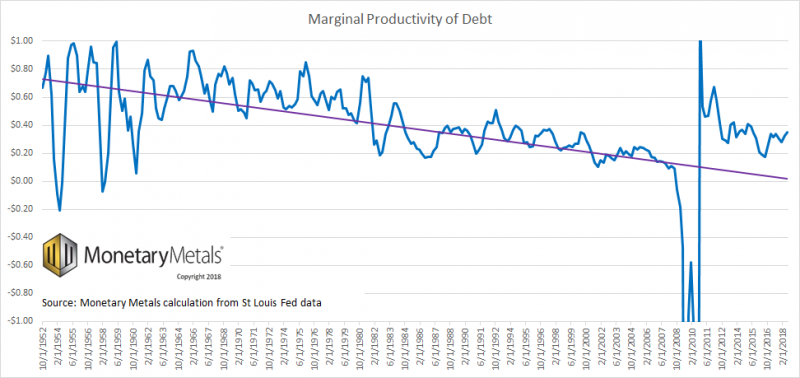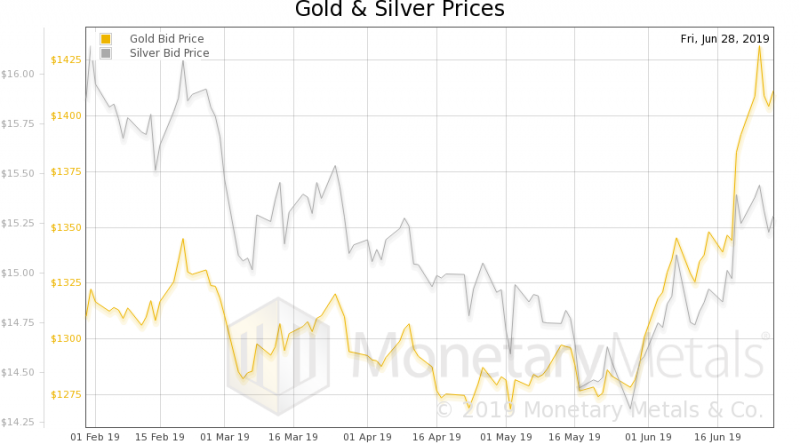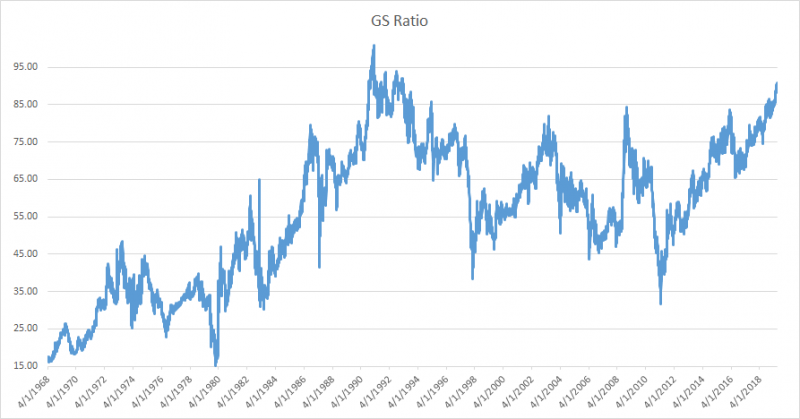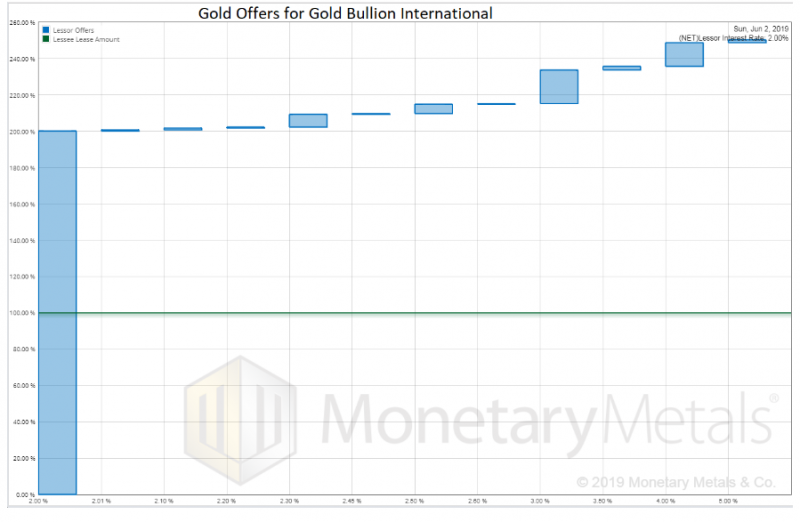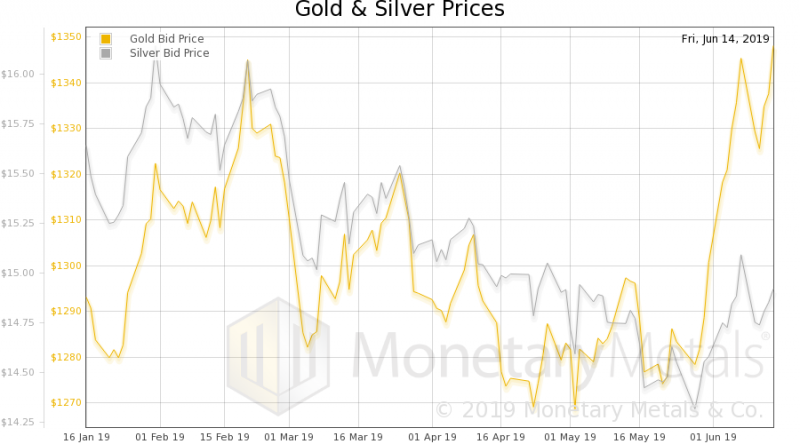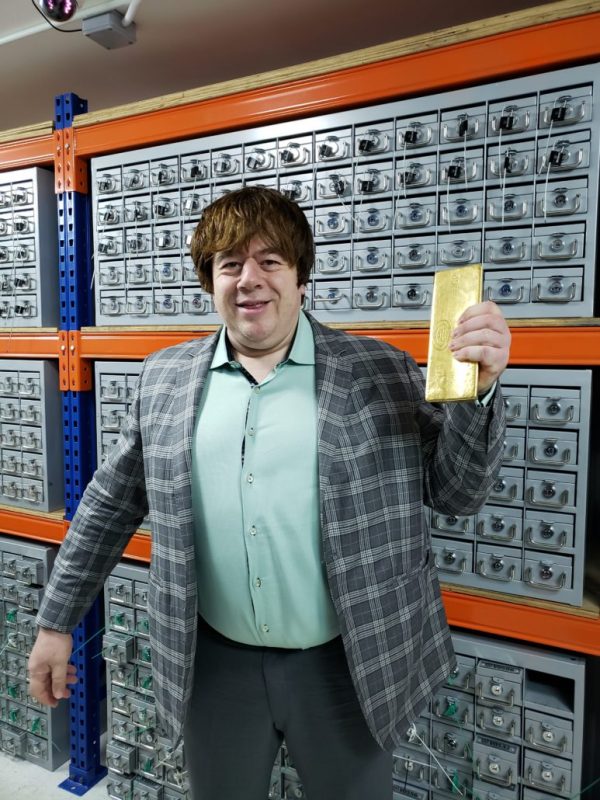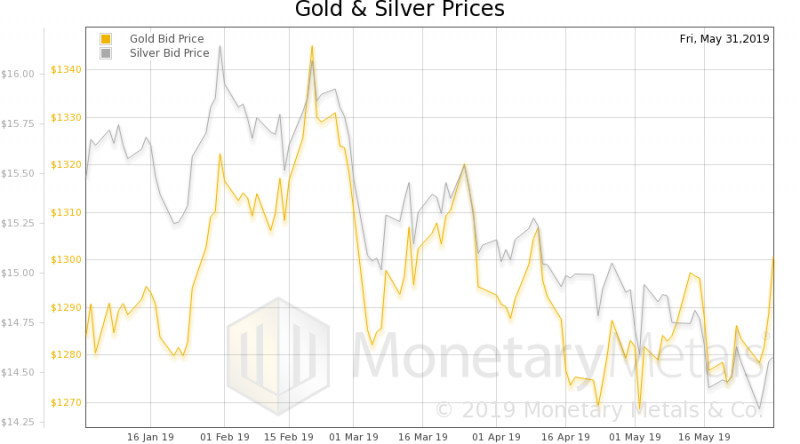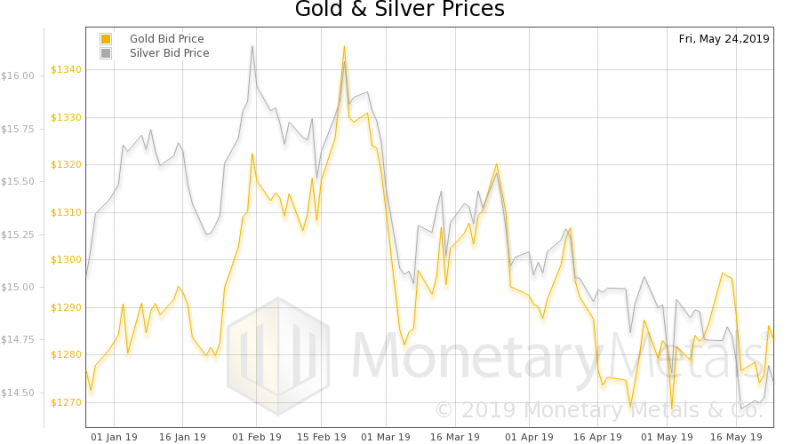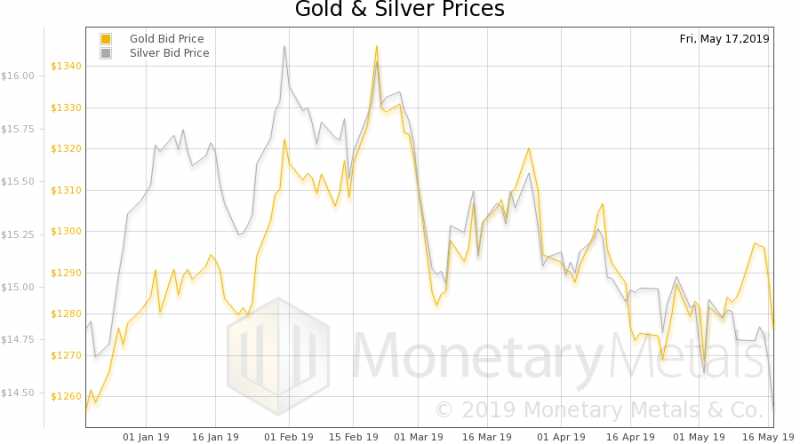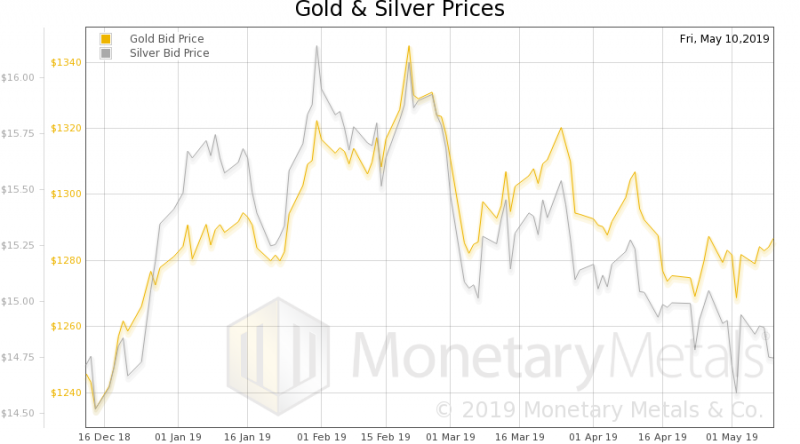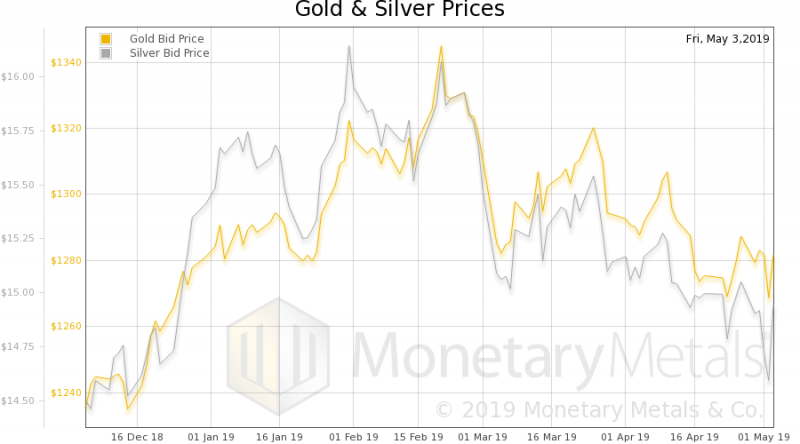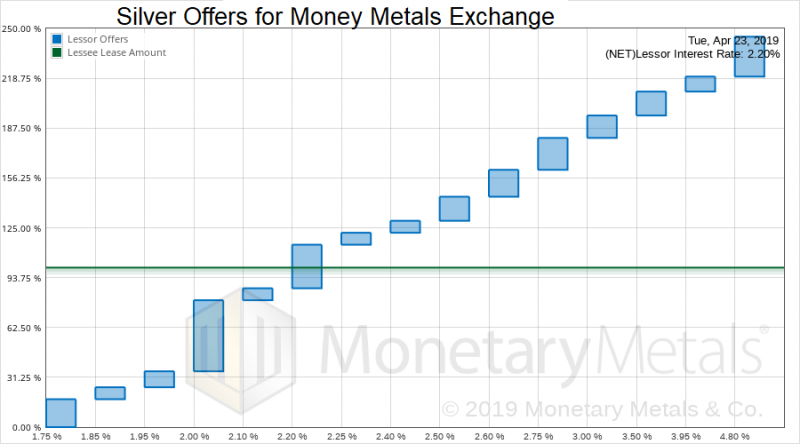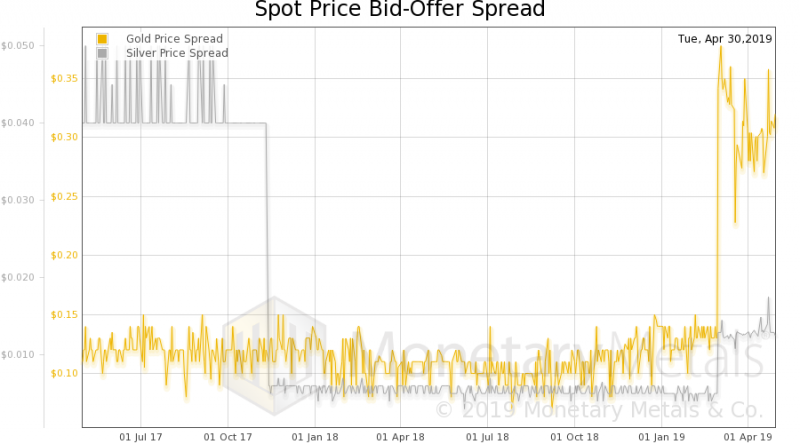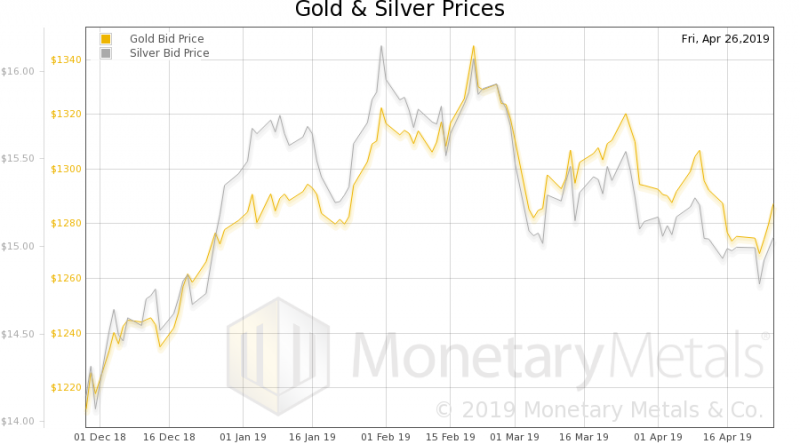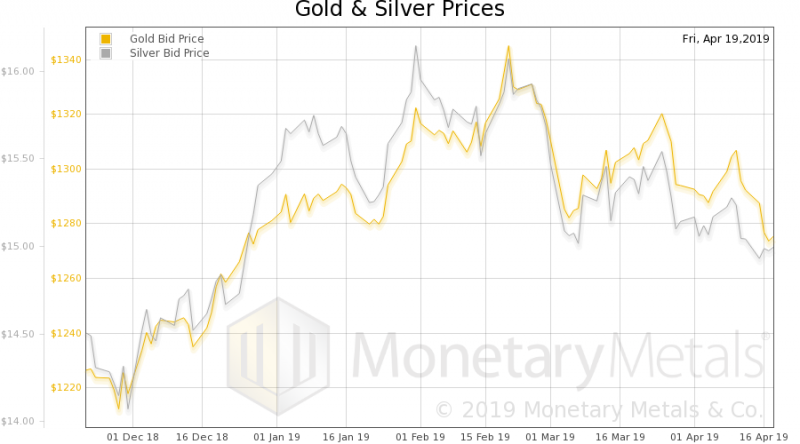Category Archive: 6a.) Monetary Metals
How to Fix GDP, Report 14 Jul
Last week, we looked at the idea of a national balance sheet, as a better way to measure the economy than GDP (which is production + destruction). The national balance sheet would take into account both assets and liabilities. If we take on another $1,000,000 debt to buy a $1,000,000 asset, then we have not added any equity.
Read More »
Read More »
Keith Weiner, PhD, CEO & Founder of Monetary Metals
Keith Weiner, PhD, CEO & Founder of Monetary Metals, believes interest rates must go lower to keep interest expense under control and result in a deflationary credit implosion.
Read More »
Read More »
More Squeeze, Less Juice, Report 7 Jul
We have been writing on the flaws in GDP: that it is no measure of the economy, because it looks only at cash and not the balance sheet, and that there are positive feedback loops.
“OK, Mr. Smarty Pants,” you’re thinking (yes, we know you’re thinking this), “if GDP is not a good measure of the economy, then what is?!”
Read More »
Read More »
All this borrowing to consume is unsustainable and the bill is overdue
June has been an interesting month for gold, as geopolitical events, market fluctuations and developments on the monetary policy front fueled an exciting ride for the precious metal. As long-term investors with a strict focus on the big picture, short-term moves and speculative angles are largely irrelevant in and of themselves, but they do provide important signals that, without fail, confirm the strategic superiority of precious metals holdings...
Read More »
Read More »
Keith Weiner Gets Interviewed
Our economic views and unique product are generating buzz. There have been a number of interviews recently (more will be posted soon). Lobo Tiggre interviewed Keith Weiner (video) about the unique Monetary Metals business model to pay interest on gold.
Read More »
Read More »
GDP Begets More GDP (Positive Feedback), Report 30 June
Last week, we discussed the fundamental flaw in GDP. GDP is a perfect tool for central planning tools. But for measuring the economy, not so much. This is because it looks only at cash revenues. It does not look at the balance sheet. It does not take into account capital consumption or debt accumulation. Any Keynesian fool can add to GDP by borrowing to spend. But that is not economic growth.
Read More »
Read More »
What Gets Measures Gets Improved, Report 23 June
Let’s start with Frederic Bastiat’s 170-year old parable of the broken window. A shopkeeper has a broken window. The shopkeeper is, of course, upset at the loss of six francs (0.06oz gold, or about $75). Bastiat discusses a then-popular facile argument: the glass guy is making money (to which all we can say is, “plus ça change, plus c’est la même chose”).
Read More »
Read More »
Gold Bullion International Lease #1 (gold)
Monetary Metals leased silver to Gold Bullion International, to support the growth of its gold jewelry line. The metal is held in the form of inventory in a third party depository.
Read More »
Read More »
The Elephant in the Gold Room, Report 16 June
We will start this off with a pet peeve. Too often, one is reading something about gold. It starts off well enough, discussing problems with the dollar or the bond market or a real estate bubble… and them bam! Buy gold because the dollar is gonna be worthless! That number again is 1-800-BUY-GOLD or we have another 1-800-GOT-GOLD in case the lines on the first number are busy!
Read More »
Read More »
Irredeemable Currency Is a Roach Motel, Report 9 June
In what has become a four-part series, we are looking at the monetary science of China’s potential strategy to nuke the Treasury bond market. In Part I, we gave a list of reasons why selling dollars would hurt China. In Part II we showed that interest rates, being that the dollar is irredeemable, are not subject to bond vigilantes.
Read More »
Read More »
Dollar Supply Creates Dollar Demand, Report 2 June
We have been discussing the impossibility of China nuking the Treasury bond market. We covered a list of challenges China would face. Then last week we showed that there cannot be such a thing as a bond vigilante in an irredeemable currency. Now we want to explore a different path to the same conclusion that China cannot nuke the Treasury bond market.
Read More »
Read More »
The Crime of ‘33, Report 27 May
Last week, we wrote about the impossibility of China nuking the Treasury bond market. Really, this is not about China but mostly about the nature of the dollar and the structure of the monetary system. We showed that there are a whole host of problems with the idea of selling a trillion dollars of Treasurys: Yuan holders are selling yuan to buy dollars, PBOC can’t squander its dollar reserves If it doesn’t buy another currency, it merely tightens...
Read More »
Read More »
China’s Nuclear Option to Sell US Treasurys, Report 19 May
There is a drumbeat pounding on a monetary issue, which is now rising into a crescendo. The issue is: China might sell its holdings of Treasury bonds—well over $1 trillion—and crash the Treasury bond market. Since the interest rate is inverse to the bond price, a crash of the price would be a skyrocket of the rate. The US government would face spiraling costs of servicing its debt, and quickly collapse into bankruptcy.
Read More »
Read More »
The Monetary Cause of Lower Prices, Report 12 May
We have deviated, these past several weeks, from matters monetary. We have written a lot about a nonmonetary driver of higher prices—mandatory useless ingredients. The government forces businesses to put ingredients into their products that consumers don’t know about, and don’t want. These useless ingredients, such as ADA-compliant bathrooms and supply chain tracking, add a lot to the price of every good.
Read More »
Read More »
Nonmonetary Cause of Lower Prices, Report 5 May
Over the past several weeks, we have debunked the idea that purchasing power—i.e. what a dollar can buy—is intrinsic to the currency itself. We have discussed a large non-monetary force that drives up prices. Governments at every level force producers to add useless ingredients, via regulation, taxation, labor law, environmentalism, etc.
Read More »
Read More »
Money Metals Exchange Lease #1 (silver)
Monetary Metals leased silver to Money Metals Exchange, to support the growth of its gold and silver bullion business. The metal is held in the form of inventory in its vault. For more information see Monetary Metals’ press release.
Read More »
Read More »
Monetary Metals Leases Silver to Money Metals Exchange
Monetary Metals® announces that it has leased silver to Money Metals Exchange® to support the growth of its business of selling gold and silver at retail and wholesale. Investors earn 2.2% on their silver, which is held in Money Metals’ vault in the form of silver products.
Read More »
Read More »
The Spreads Blow Out, Update 1 May
The bid-ask spread of both (spot) gold and silver has blown out. Both, on March 1. In gold, the spread had been humming along around 13 cents—gold is the most marketable commodity, and this is the proof, a bid-ask spread around 1bps—until… *BAM!* It explodes to around 35 cents, or two and half times as wide.
Read More »
Read More »
Is Keith Weiner an Iconoclast? Report 28 Apr
We have a postscript to our ongoing discussion of inflation. A reader pointed out that Levis 501 jeans are $39.19 on Amazon (in Keith’s size—Amazon advertises prices as low as $16.31, which we assume is for either a very small size that uses less fabric, or an odd size that isn’t selling). Think of the enormity of this. The jeans were $50 in 1983. After 36 years of relentless inflation (or hot air about inflation), the price is down to $39.31. Down...
Read More »
Read More »
The Two Faces of Inflation, Report 22 Apr
We have a postscript to last week’s article. We said that rising prices today are not due to the dollar going down. It’s not that the dollar buys less. It’s that producers are forced to include more and more ingredients, which are not only useless to the consumer. But even invisible to the consumer. For example, dairy producers must provide ADA-compliant bathrooms to their employees.
Read More »
Read More »
Donate to SNBCHF.com
Donate to SNBCHF.com Via Paypal or Bitcoin To Help Keep the Site Running
Please consider making a small donation to Snbchf.com. Thanks
Bitcoin wallet: bc1qa2h6hgd0xkuh7xh02jm5x25k6x8g7548ffaj3j
Receive a Daily Mail from this Blog
Live Currency Cross Rates
 On Swiss National Bank
On Swiss National Bank
-
SNB Sight Deposits: decreased by 4.3 billion francs compared to the previous week
5 days ago -
USD/CHF stays above 0.9100 nearing the highs since October
2024-04-16 -
Pound Sterling falls back as upbeat US Retail Sales strengthen US Dollar
2024-04-15 -
Canadian Dollar remains vulnerable after strong US Retail Sales
2024-04-15 -
2024-04-09 – Martin Schlegel: Interest rates and foreign exchange interventions: Achieving price stability in challenging times
2024-04-09
 Main SNB Background Info
Main SNB Background Info
-
SNB Sight Deposits: decreased by 4.3 billion francs compared to the previous week
5 days ago -
The Secret History Of The Banking Crisis
2017-08-14 -
SNB Balance Sheet Now Over 100 percent GDP
2016-08-29 -
The relationship between CHF and gold
2016-07-23 -
CHF Price Movements: Correlations between CHF and the German Economy
2016-07-22
Featured and recent
-
 6 Monate ohne Gehalt leben? Für die meisten Deutschen kein Problem! #gehalt
6 Monate ohne Gehalt leben? Für die meisten Deutschen kein Problem! #gehalt -
 How Nations Escape Poverty – Vietnam & Capitalism
How Nations Escape Poverty – Vietnam & Capitalism -
 Spektakulärer Aussetzer! Als Helge Lindh (SPD) die Nerven verlor!
Spektakulärer Aussetzer! Als Helge Lindh (SPD) die Nerven verlor! -
 Unwirksame Klauseln im Mietvertrag #shorts
Unwirksame Klauseln im Mietvertrag #shorts -
 Diese Zahl solltest Du kennen | Geld ganz einfach
Diese Zahl solltest Du kennen | Geld ganz einfach -
 Gold Kilo Bars
Gold Kilo Bars -
 Gold & Silver Start to Take Off: Will Americans Get on Board?
Gold & Silver Start to Take Off: Will Americans Get on Board? -
 Why American Silver Eagles Are the Ultimate Investment Choice for Both Beginners and Experts
Why American Silver Eagles Are the Ultimate Investment Choice for Both Beginners and Experts -
 Wie 1.000 Euro investieren?
Wie 1.000 Euro investieren? -
 E.ON Hauptversammlung 2024
E.ON Hauptversammlung 2024
More from this category
 6 Monate ohne Gehalt leben? Für die meisten Deutschen kein Problem! #gehalt
6 Monate ohne Gehalt leben? Für die meisten Deutschen kein Problem! #gehalt18 May 2024
 How Nations Escape Poverty – Vietnam & Capitalism
How Nations Escape Poverty – Vietnam & Capitalism18 May 2024
 Spektakulärer Aussetzer! Als Helge Lindh (SPD) die Nerven verlor!
Spektakulärer Aussetzer! Als Helge Lindh (SPD) die Nerven verlor!18 May 2024
 Unwirksame Klauseln im Mietvertrag #shorts
Unwirksame Klauseln im Mietvertrag #shorts18 May 2024
 Diese Zahl solltest Du kennen | Geld ganz einfach
Diese Zahl solltest Du kennen | Geld ganz einfach18 May 2024
 Gold Kilo Bars
Gold Kilo Bars17 May 2024
 Gold & Silver Start to Take Off: Will Americans Get on Board?
Gold & Silver Start to Take Off: Will Americans Get on Board?17 May 2024
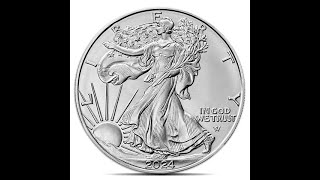 Why American Silver Eagles Are the Ultimate Investment Choice for Both Beginners and Experts
Why American Silver Eagles Are the Ultimate Investment Choice for Both Beginners and Experts17 May 2024
 Wie 1.000 Euro investieren?
Wie 1.000 Euro investieren?17 May 2024
 E.ON Hauptversammlung 2024
E.ON Hauptversammlung 202417 May 2024
 Darum lohnt sich eine Steuererklärung
Darum lohnt sich eine Steuererklärung17 May 2024
 Noch 17 Jahre bis zur Rente: Zu spät für ETF-Einstieg? | Saidis Senf
Noch 17 Jahre bis zur Rente: Zu spät für ETF-Einstieg? | Saidis Senf17 May 2024
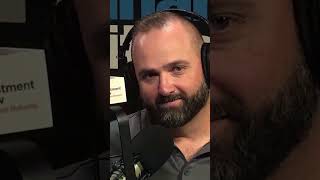 How to Set Rules for Smart Investments and Portfolio Management
How to Set Rules for Smart Investments and Portfolio Management17 May 2024
 #497 1.095€ vom Finanzamt: 3 Tipps für die richtige Steuersoftware #steuern
#497 1.095€ vom Finanzamt: 3 Tipps für die richtige Steuersoftware #steuern17 May 2024
 Userfrage: Geldsystem, Schuldgeld mit Zins und Zinseszins
Userfrage: Geldsystem, Schuldgeld mit Zins und Zinseszins17 May 2024
 Totale Wahl-Blamage in Bayern!
Totale Wahl-Blamage in Bayern!17 May 2024
 ¡ESCÁNDALO! El GOBIERNO celebra CIFRAS DESASTROZAS del FMI
¡ESCÁNDALO! El GOBIERNO celebra CIFRAS DESASTROZAS del FMI17 May 2024
 5-17-24 How Long Have You Planned to Live?
5-17-24 How Long Have You Planned to Live?17 May 2024
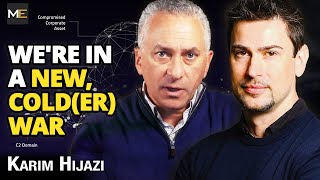 Investor Watch 2024: Cyber Espionage & National Security Threats | Karim Hijazi
Investor Watch 2024: Cyber Espionage & National Security Threats | Karim Hijazi17 May 2024
 Durchschnittsbruttogehalt nach Bundesländern #gehalt
Durchschnittsbruttogehalt nach Bundesländern #gehalt17 May 2024









